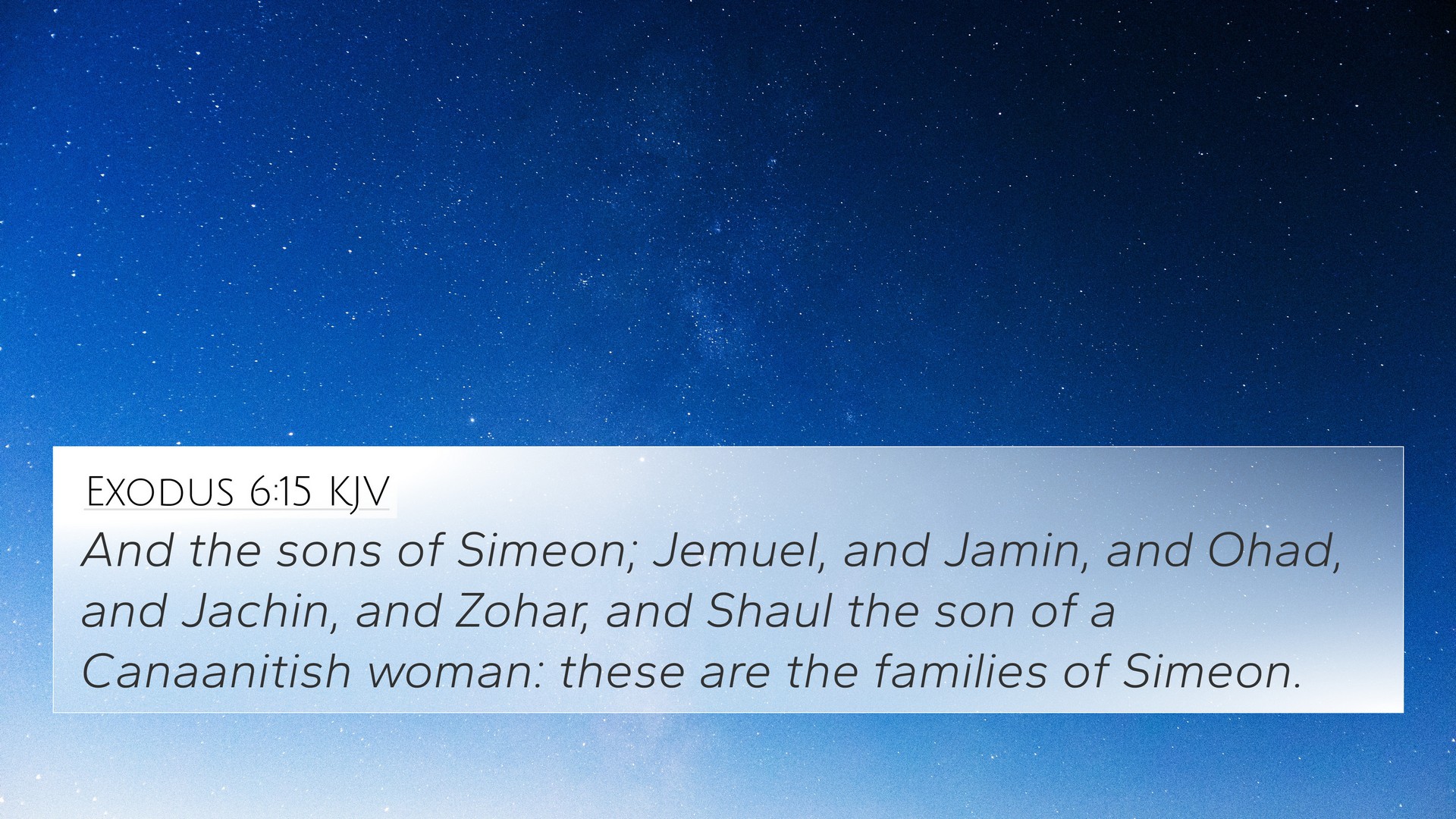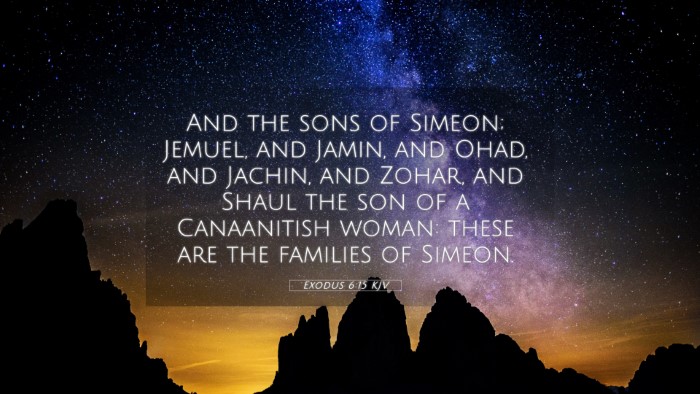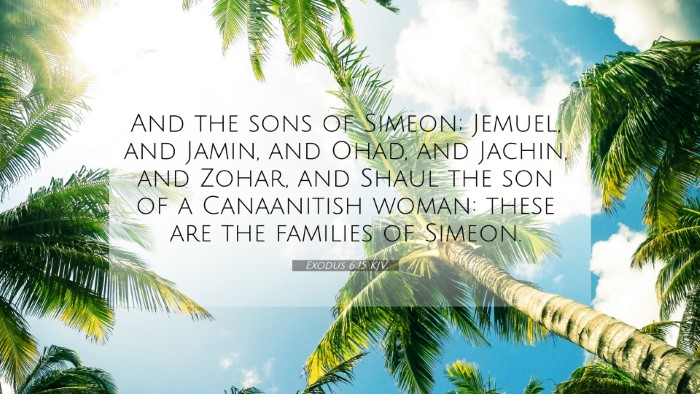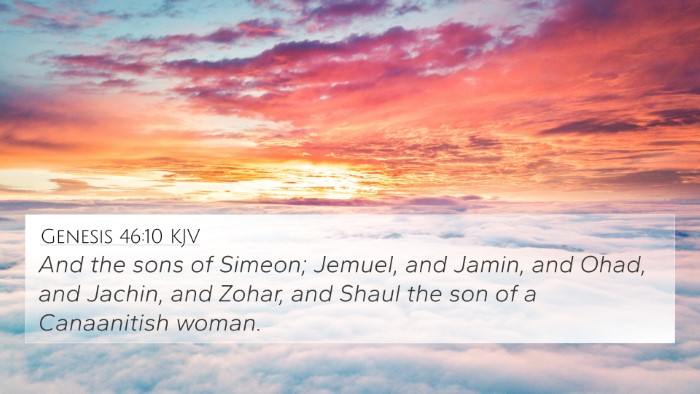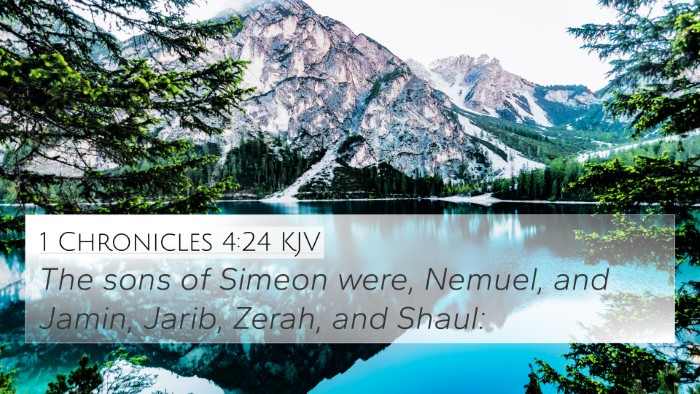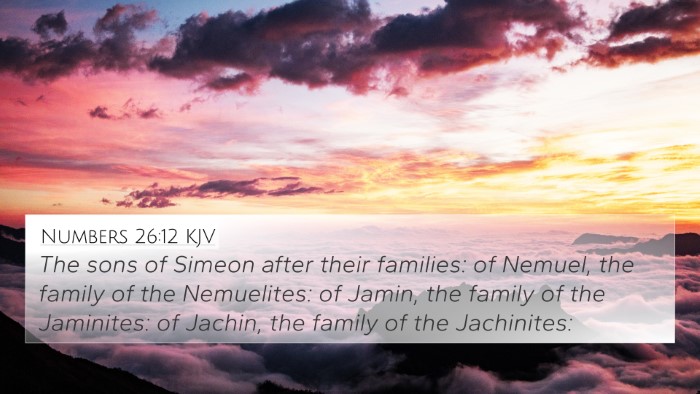Understanding Exodus 6:15
Exodus 6:15 reads:
"The son of the wife of Amram, Nahshon; and of Nahshon, the son of Salmon,..."
This verse is part of the genealogical record that God established for the families of Israel, particularly focused on the lineage of Moses. The significance of genealogies in the Bible is paramount, as they not only establish the historical validity of characters within the narrative but also serve theological purposes. Let us delve deeper into the meaning and implications of this verse by drawing from public domain commentaries like those of Matthew Henry, Albert Barnes, and Adam Clarke.
Genealogical Importance
Matthew Henry emphasizes the importance of genealogies in Scripture as a means of demonstrating God's faithfulness across generations. The mention of Amram and Nahshon ties Moses to the promised lineage, affirming God's ongoing covenant with His people.
The Legacy of Amram
According to Albert Barnes, Amram is notable for being the father of both Moses and Aaron, crucial leaders during the Exodus. This makes the genealogy not simply a list of names but a connection to significant events in Israel's history, illustrating how God chose families for His divine purpose.
Nahshon in Salvation History
Adam Clarke provides insight into Nahshon's role, noting that he becomes a figure of faithfulness and obedience in the lineage of Jesus. His mention in Exodus presents a continuity of faith through generations, linking the Old Testament heritage to the New Testament fulfillment in Christ.
Cross-References for Deeper Study
To fully appreciate Exodus 6:15, we can examine the following related scripture references:
- Numbers 1:7: Details the tribe of Judah and highlights Nahshon's leadership.
- Ruth 4:20-21: Shows the lineage connection from Nahshon down to King David.
- Matthew 1:3-6: The genealogy of Jesus includes these ancestral ties, highlighting the fulfillment of God's promise.
- Hebrews 7:14: Points out Jesus’ descent from the tribe of Judah, emphasizing the continuation from Nahshon.
- Exodus 2:1-10: The birth and narrative surrounding Moses, providing context for the genealogy.
- Exodus 6:20: Further details about the lineage of Amram and Jochebed, Moses's parents.
- Nehemiah 12:10: References the descendants of Joshua, maintaining the continuity of leadership through generations.
Thematic Connections
The genealogical structure found in Exodus provides vital thematic connections within Scripture:
- Covenant Faithfulness: The narrative demonstrates God's unwavering commitment through generations.
- Leadership and Obedience: The legacy of strong leaders like Moses and Aaron highlights the importance of obedience to God's call.
- Preparation for Salvation: The lineage leads to the fulfillment of redemption in Jesus, showcasing God’s plan from the outset.
Applying Cross-Referencing Tools
When studying the Bible, using tools for cross-referencing can enhance understanding:
- Bible Concordance: A valuable resource for finding connections between words and themes.
- Bible Cross-Reference Guide: Helps locate verses that connect thematically or historically.
- Cross-Reference Bible Study: Methods for analyzing relationships between scriptures for deeper insights.
Conclusion
In conclusion, Exodus 6:15 serves as more than just a name in a genealogy; it reflects the intricate web of God's redemptive plan throughout the ages. Understanding the connections between Bible verses is essential for grasping the full narrative of Scripture. By employing cross-referencing methodologies, believers can gain richer insights into their faith and how it connects to the overarching story of God’s people.
